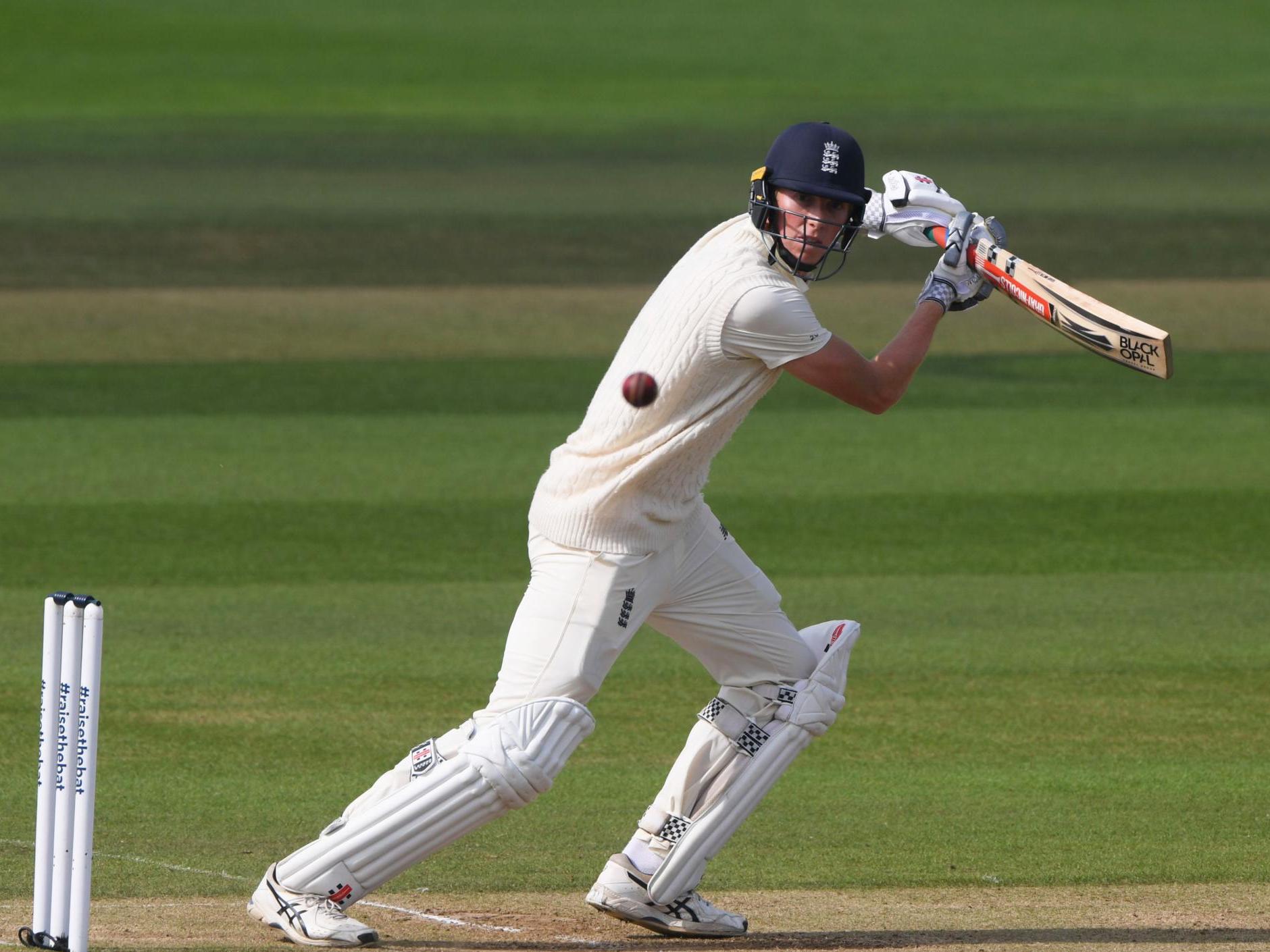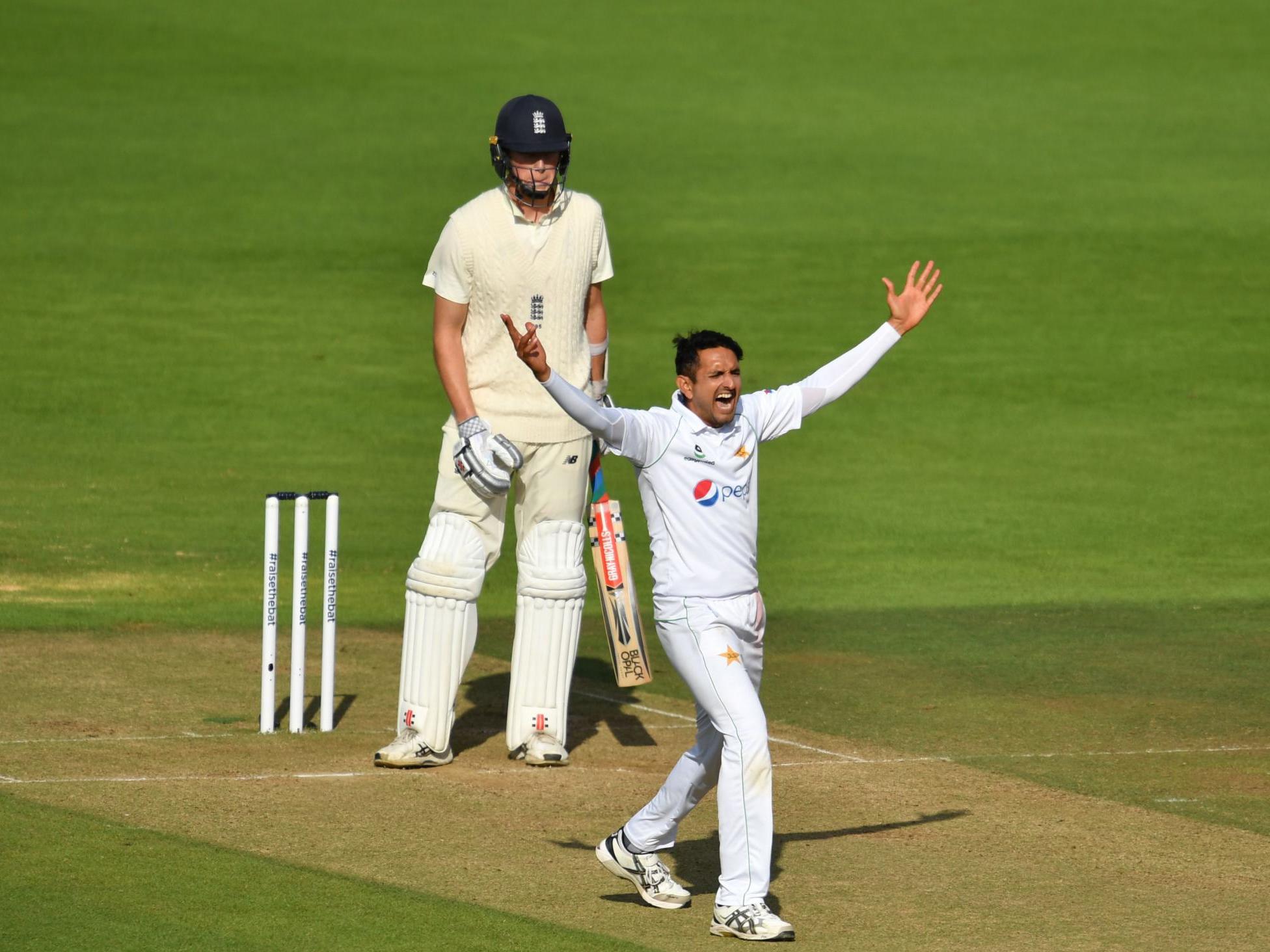England vs Pakistan: Second Test lost to weather but lessons can be learned to recalibrate the game
The second Test ended in a draw, with the lack of cricket sparking a debate about the handling of play
Officially there were still 56 overs left in the match from 3:20pm. But once Pakistan skipper Azhar Ali, a part-time leg spinner, bowled the first ball of the 39th over off a long run, England declared on 110 for four to finally bring an interminable Test match to a close.
All in, only 134.3 overs of play were possible since Thursday. A combination of rain, bad light and red tape prevented the match moving along which was an even bigger shame considering the pitch produced had enough juice for 14 wickets yet trustworthy enough for three batsmen to pocket half-centuries. Nevertheless, here was only the third draw in a Test played in the United Kingdom in the last six years. No Test in England has had fewer deliveries across five days since the 677 between England and Pakistan at Lord's in 1987.
A thunderous downpour at around 4:30am on Monday meant there was so chance of play until 3:20pm, by which time the ground staff had cleared the surface water and sorted out the bowler’s run-up at the Hilton Hotel End. As ever, a bit of sawdust did the trick.
Though the cricket witnessed was largely inconsequential there were valuable runs for Zak Crawley and the first chapters of developing narratives that could be written during the third and final Test which begins on Friday.
Crawley picked up a handy 53, a third Test half-century, with some excellent strokes against a Pakistan attack who were not going through the motions. That was evident most in the work of Mohammad Abbas, who finished with two for 28 from his 14 overs: Sibley tickling one down the leg side for 32 and Crawley squared up expertly to halve his charge. Yasir Shah trapped Ollie Pope (9) LBW for the last bit of action worth paying attention to.

Though the Test as a spectacle should largely be forgotten, its legacy could be that the last five days give cause for a serious rethink about how and why cricket should be played when conditions are not totally up to scratch. Considering how much effort has been put into getting these matches on and the circumstances personally, professionally and fiscally that require cricket to be played, recalibration is needed as the wider game looks to re-emerge from the darkness of a pandemic.
It was clear on day five that the urgency from standing umpires Michael Gough and Richard Kettleborough and the ground staff was elicited by a nudge from above to show more willing than they had over the previous few days.
Day one was brought to a close due to bad light, and likewise for day two, despite visibility not being all that bad at the time. Day three’s complete no show was unavoidable, but day four drew the most derision when play was called at 4:30pm due to an outfield needed around three hours to get the field fit to play. However, the abandonment was followed by hours of sunshine that meant by 6pm the ground was playable and could have seen 90 minutes of play.

That was the straw that broke the camel’s back, with Sky, the BBC, and by extension the ECB, frustrated with the reluctance of umpires to allow cricket to be played in these unique circumstances. As per the ICC regulations around bad light, it is the duty of the umpire to maximise play, within reason.
Sunday’s decision to stop altogether was all the more baffling considering the players, commentators and ground staff are all staying on site, and no considerations needed to be made for spectators sitting around in the wet for hours on the end or regarding refunds on tickets.
Similarly, behind-closed-doors matches could also show more flexibility around start times. In certain parts of the world, such as Australia and South Africa, 11am starts can be moved to 10:30am to make up for time lost on previous days. That is not the case in England given the tricky logistics around such as informing supporters of the early rise and the difficulty and extra outlay involved in rearranging travel plans.
But with no one in the stands, 10:30am starts could be brought in for the time being, even as soon as Friday's decider. The rigidity has been particularly frustrating as a number of days this summer have started brightly before being affected by weather and light halfway through the first session.
On a more positive note, the series remains relatively intact. Pakistan can no longer win it outright given England’s 1-0 lead, but they hold the trophy which they will retain if they can win the third Test.
That is well within their capabilities, as we saw in the first Test at Emirates Old Trafford which England managed to steal at the death courtesy of Chris Woakes and Jos Buttler. You could even argue that Pakistan have so far won more sessions this series.
Even in the little cricket we had, there are more positives for them than negatives. Abid Ali (60) and Mohammad Rizwan (72) found form in the first innings, and Pakistan’s bowlers were able to land a telling blow on Rory Burns, giving the opener the second duck of his Test career and sewing a seed of doubt in a mind usually so clear. Though he is under no pressure for his place, he does only have 14 runs in three innings so far. Weather-permitting, he will get two more opportunities to bat in England’s last Test of 2020.
Similarly, reigniting chat about Sibley’s knack of being caught down the leg side can count as a win, as could the manner in which Yasir fooled Pope with a googly. The leg spinner could have also bagged a second had Rizwan stumped Crawley when the right-hander had just 37.
In terms of selection, both teams will not have to consider workloads which formed a huge part of England's planning around their battery of quicks coming into this summer with six Test matches back-to-back. As such, Joe Root, who finished the day not out on nine, will have a lot of thinking to do. He has all his onsite quicks fit and firing. And one thing we have learned this summer is that getting the combination right is not simple, and it will not get any easier this week.
Join our commenting forum
Join thought-provoking conversations, follow other Independent readers and see their replies
Comments
Bookmark popover
Removed from bookmarks